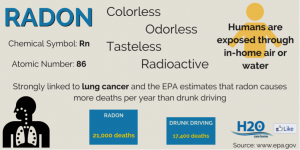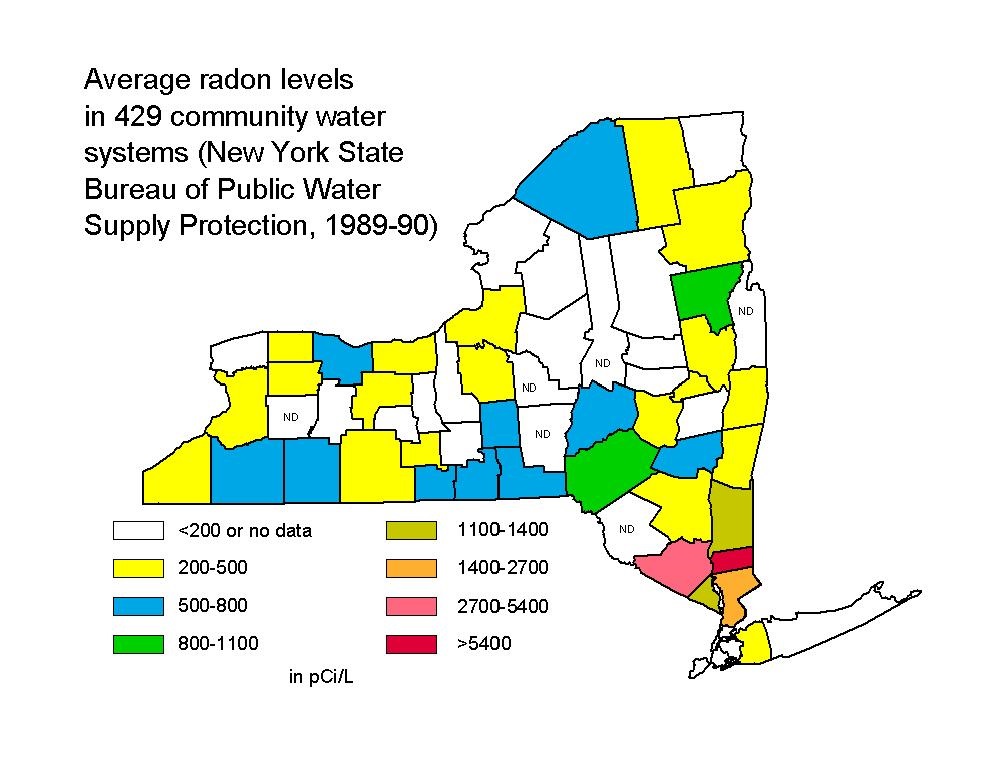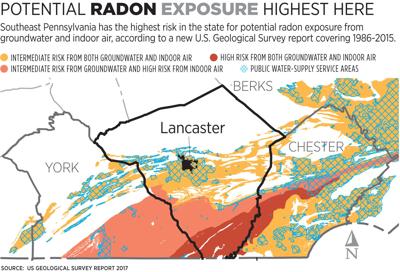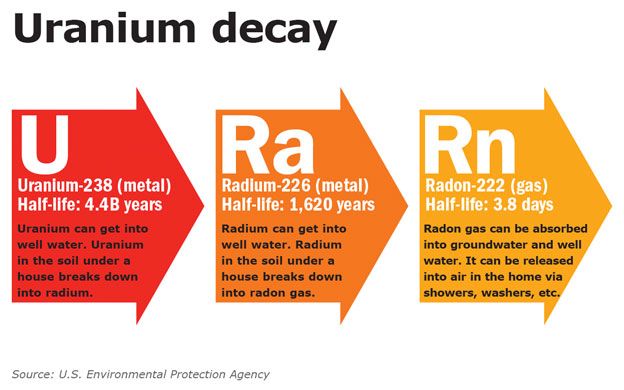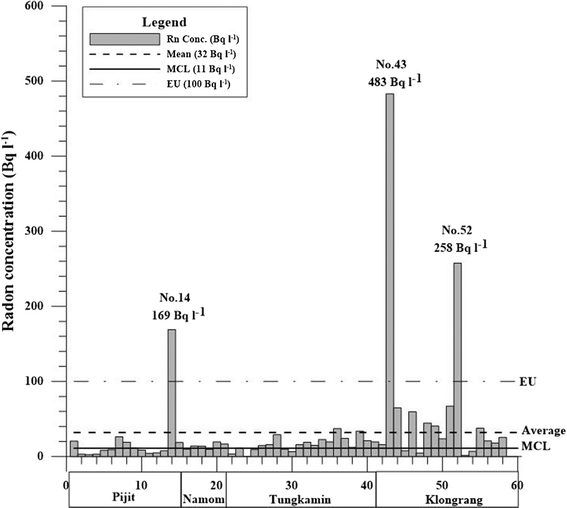While most radon related deaths are due to radon gas accumulated in houses from seepage through cracks in the foundation 30 to 1 800 deaths per year are attributed to radon from household water.
Radon in well water limits.
Drinking water containing radon also presents a risk of developing internal organ cancers primarily stomach cancer.
As required by the safe drinking water act epa has developed a proposed regulation to reduce radon in drinking water that has a multimedia mitigation option to reduce radon in indoor air.
Some radon stays in the water.
However breathing radon increases the risk of lung cancer over the course of your lifetime.
For every 10 000 picocuries per liter pci l of radon in your water it is estimated that 1 pci l is added to your radon in the air.
High levels of dissolved radon are found in the groundwater in some areas flowing through granite or granitic sand and gravel formations.
The radon in your water can enter the air in your home when you use water for household activities such as showering washing clothes and cooking.
Radon is a colorless odorless tasteless and invisible gas produced by the decay of naturally occurring uranium in soil and water.
Exposure to radon is the second leading cause of lung cancer after smoking.
Radon in soil under homes is the biggest source of radon in indoor air and presents a greater risk of lung cancer than radon in drinking water.




